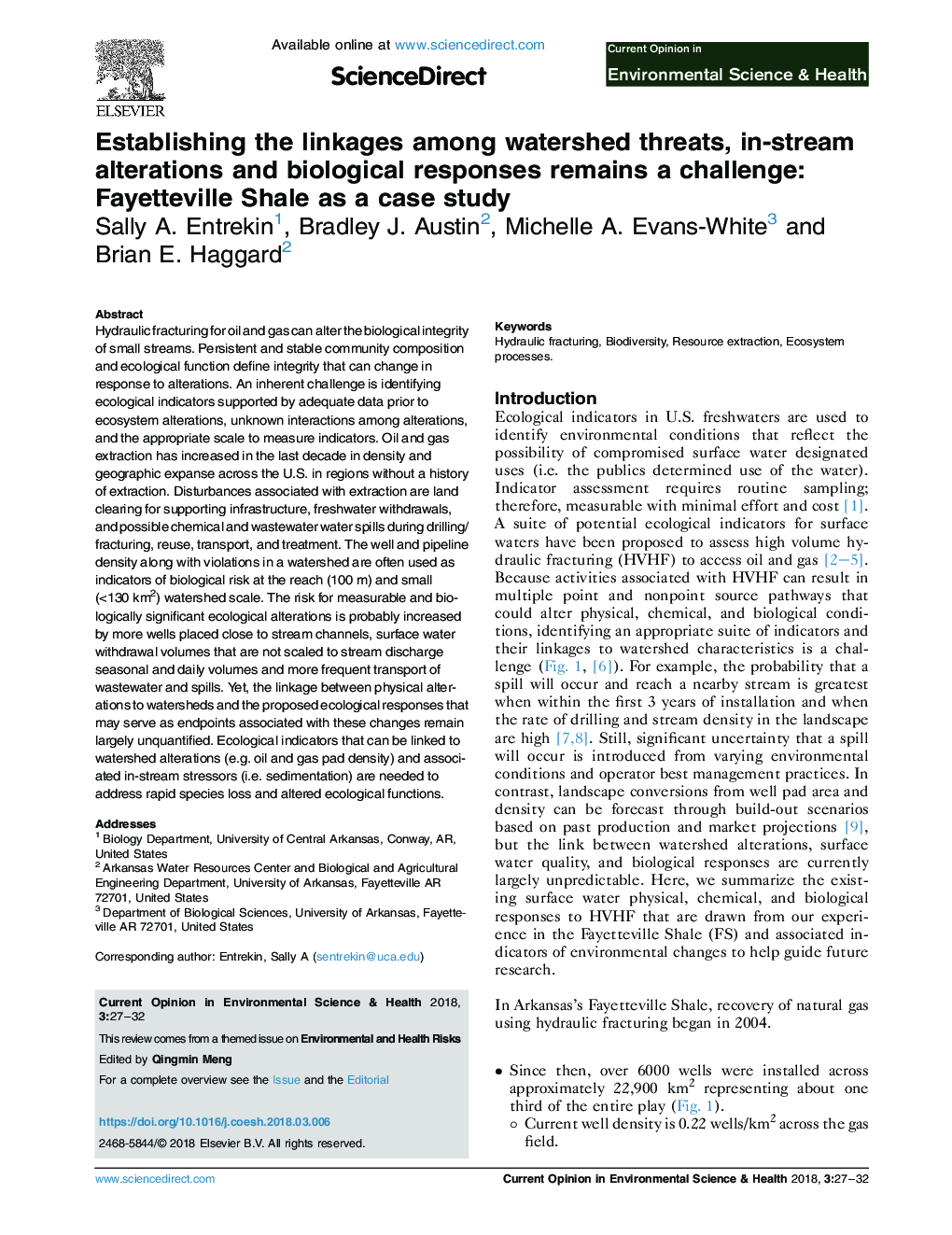| Article ID | Journal | Published Year | Pages | File Type |
|---|---|---|---|---|
| 8940597 | Current Opinion in Environmental Science & Health | 2018 | 6 Pages |
Abstract
Hydraulic fracturing for oil and gas can alter the biological integrity of small streams. Persistent and stable community composition and ecological function define integrity that can change in response to alterations. An inherent challenge is identifying ecological indicators supported by adequate data prior to ecosystem alterations, unknown interactions among alterations, and the appropriate scale to measure indicators. Oil and gas extraction has increased in the last decade in density and geographic expanse across the U.S. in regions without a history of extraction. Disturbances associated with extraction are land clearing for supporting infrastructure, freshwater withdrawals, and possible chemical and wastewater water spills during drilling/fracturing, reuse, transport, and treatment. The well and pipeline density along with violations in a watershed are often used as indicators of biological risk at the reach (100Â m) and small (<130Â km2) watershed scale. The risk for measurable and biologically significant ecological alterations is probably increased by more wells placed close to stream channels, surface water withdrawal volumes that are not scaled to stream discharge seasonal and daily volumes and more frequent transport of wastewater and spills. Yet, the linkage between physical alterations to watersheds and the proposed ecological responses that may serve as endpoints associated with these changes remain largely unquantified. Ecological indicators that can be linked to watershed alterations (e.g. oil and gas pad density) and associated in-stream stressors (i.e. sedimentation) are needed to address rapid species loss and altered ecological functions.
Related Topics
Life Sciences
Environmental Science
Environmental Chemistry
Authors
Sally A. Entrekin, Bradley J. Austin, Michelle A. Evans-White, Brian E. Haggard,
